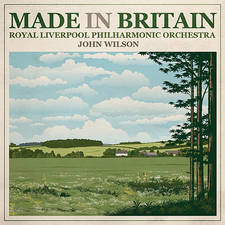Beethoven - Symphony No. 7 in A
Beethoven composed his Symphony No. 7 in 1811, while staying in the Bohemian spa town of Teplice in the hope of improving his poor health.
Download Beethoven's 7th Symphony for free >
It’s tempting to feel sorry for Beethoven’s Symphony No. 7. Hidden away amid the Fifth (the most famous opening four notes in the history of classical music, the Sixth (how could anyone fail to love the 'Pastoral'?) and the mighty colossus that is his Ninth, you feel as if the Seventh is a work that could easily get forgotten.
That fate has arguably befallen Symphony No. 8 – but not No. 7. The raw power and drama found in Beethoven’s Symphony No. 9 seem, in many ways, to be receiving their first full outing here. There’s a visceral quality to the music – not least in the almost crazed finale when the musicians appear to be playing as if their lives depend on it. The sombre second movement, which featured in the film The King's Speech and summed up the moment perfectly, is a wonderful blend between orchestral gravitas and the swelling tunes Beethoven writes so well. In the case of the premiere, those orchestral musicians included fellow composers Meyerbeer, Spohr and Moscheles, with Beethoven himself on the podium.
Described by Wagner, no less, as 'the apotheosis of the dance', this four-movement symphony begins in grave, sombre tones. Not for Beethoven the stirring opening to the Fifth, or the lilting, sunny start to the Sixth; instead, the orchestral colours are dark, creating a sense of foreboding about what’s to come. The lightness of touch in later parts of the symphony – particularly the third movement – is therefore surprising, with some parts seeming very consciously to link back to the light-hearted mood of the Pastoral. The unbounded finale, meanwhile, was apparently summed up by Tchaikovsky as 'a whole series of images, full of unrestrained joy, full of bliss and pleasure of life'.


























